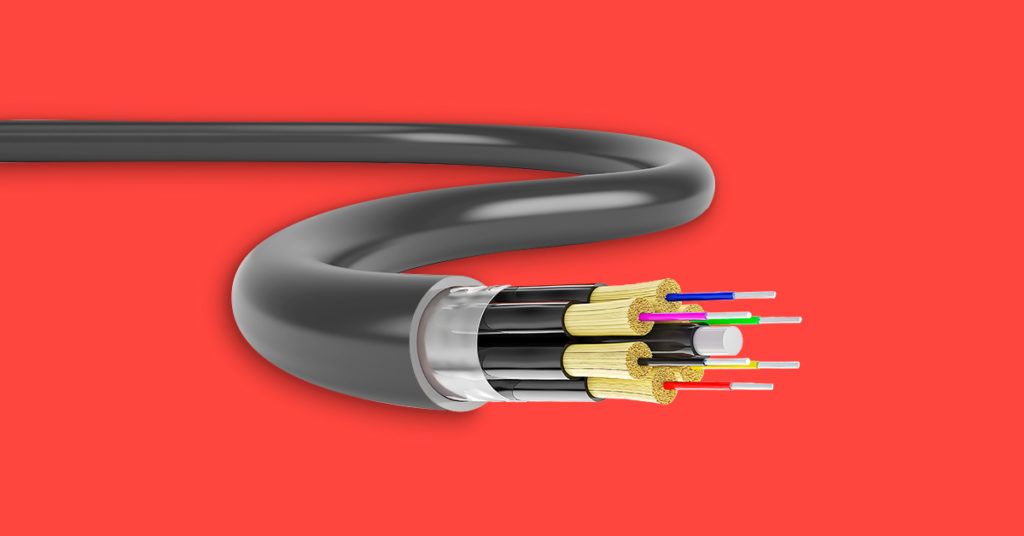
Why Is Fiber Future-Proof?
1 commentIf you’ve looked into upgrading your home internet to a gigabit fiber connection, you’ve probably seen some marketing materials that claim fiber optic internet is future-proof. This isn’t made-up marketing talk. It’s real. Let’s explore what it really means—and why fiber is going to keep delivering the fastest internet speeds possible for years to come.
Fiber can get faster
Gigabit speeds are the gold standard for home fiber optic broadband at the moment. Because fiber offers symmetrical upload and downloads speeds, this means you get approximately 1000 Mbps download speed and 1000 Mbps upload speed. That’s enough internet bandwidth for everyone in your house to stream 4K UHD videos, play any online games they want or just work from home. All at the same time.
But fiber internet cables are capable of supporting much faster speeds. Information is sent using lasers to transmit the data along thin strands of fiberglass at almost the speed of light. As a method of data transfer, gigabit speeds are nowhere close to its maximum. In fact, the undersea fiber optic cables that connect North America, Europe, Asia and the rest of the world are already significantly quicker. Google has one cable with a bandwidth of 60 Tbps (60,000,000 Mbps).
So why can you only get gigabit internet speeds at home now?
It’s simple: As fast as fiber cables can be, the rest of the home internet infrastructure isn’t ready. Even though the fiber cables are capable of supporting faster speeds, the internet service providers (ISPs) have to upgrade their entire networks to take advantage of them—and things just aren’t there yet. Big businesses, universities and government offices already have significantly faster connections, but it’s just not feasible for every single household to have one. Or at least not yet.
And it’s not just the ISPs. Most of your devices couldn’t take advantage of faster internet speeds either. The fastest a top-end iPhone can possibly download data over Wi-Fi is 1200 Mbps, and that requires a router that supports it. Many home wireless routers can only handle a few hundred Mbps—far less than the speeds gigabit internet already offers.
However, over the next few years and decades, as ISPs upgrade their networks and consumer devices adapt to faster connections, the fiber cables that run to your home won’t need to change, even as your internet bandwidth gets bigger. They’re just as capable of handling 10 gigabit speeds—or even 100 gigabit speeds—as they are of handling today’s 1 gigabit speeds.
And that’s a big part of why fiber is so future-proof.
Fiber is more secure and reliable
With copper cables, data is sent as an electronic signal along the wires. With fiber optic cables, the data is sent as beams of light. This makes for a more secure and reliable internet connection, especially over longer distances.
The electronic signals in copper cables are prone to electromagnetic interference (EMI) and radio frequency interference (RFI). High-voltage electrical wires, electronic devices and even fluorescent lights can all cause problems for data transfer through copper cables. Even worse, data degrades—or “attenuates”—over distance. The farther your house is from your ISP’s exchange, the less reliable your connection will be.
With fiber optic cable internet, data can be sent much farther with less attenuation—up to 60 miles in some cases. This is part of what enables fiber’s high speeds. It’s also what makes the fiber infrastructure so future-proof: Cables can be laid to new locations that were previously unviable.
Fiber is more durable
Fiber optic cables are designed to survive storms, hurricanes and whatever else Mother Nature can throw at them. The individual strands of fiberglass are wrapped in a protective cladding, then bundled together and wrapped in even more protective materials. It makes them waterproof, weatherproof and temperature-proof. Once a fiber cable is laid, it should last a long time without needing to be replaced.
As a bonus, unlike copper cables, fiber optic cables have limited scrap value—which means people are less likely to steal them.
Yes, Frontier fiber is built for the future with gig speed
Our fiber has been designed for high-speed (up to a gig and getting faster), secure, reliable internet connections from the ground up. It’s meant to transfer large amounts of data long distances extremely quickly. Frontier fiber connections aren’t going to be replaced by some new futuristic cable in the next few years—for fiber, the future is already here. Check here to see if it’s available at your address.
So whether you want to move to a gig, 2 gig or the gig speed of the future, with Frontier you’ll be ready.


FTTH/FTTP is the best future proof connection, period, but one of the things often not discussed is the cost of fiber build and RoI. It can cost upwards of 100000USD / mile to deploy fiber infrastructure, so it needs a certain density to make it a cost effective investment. Rural areas could take decades to see any type of return on investment so they may never see FTTH/FTTP build out.